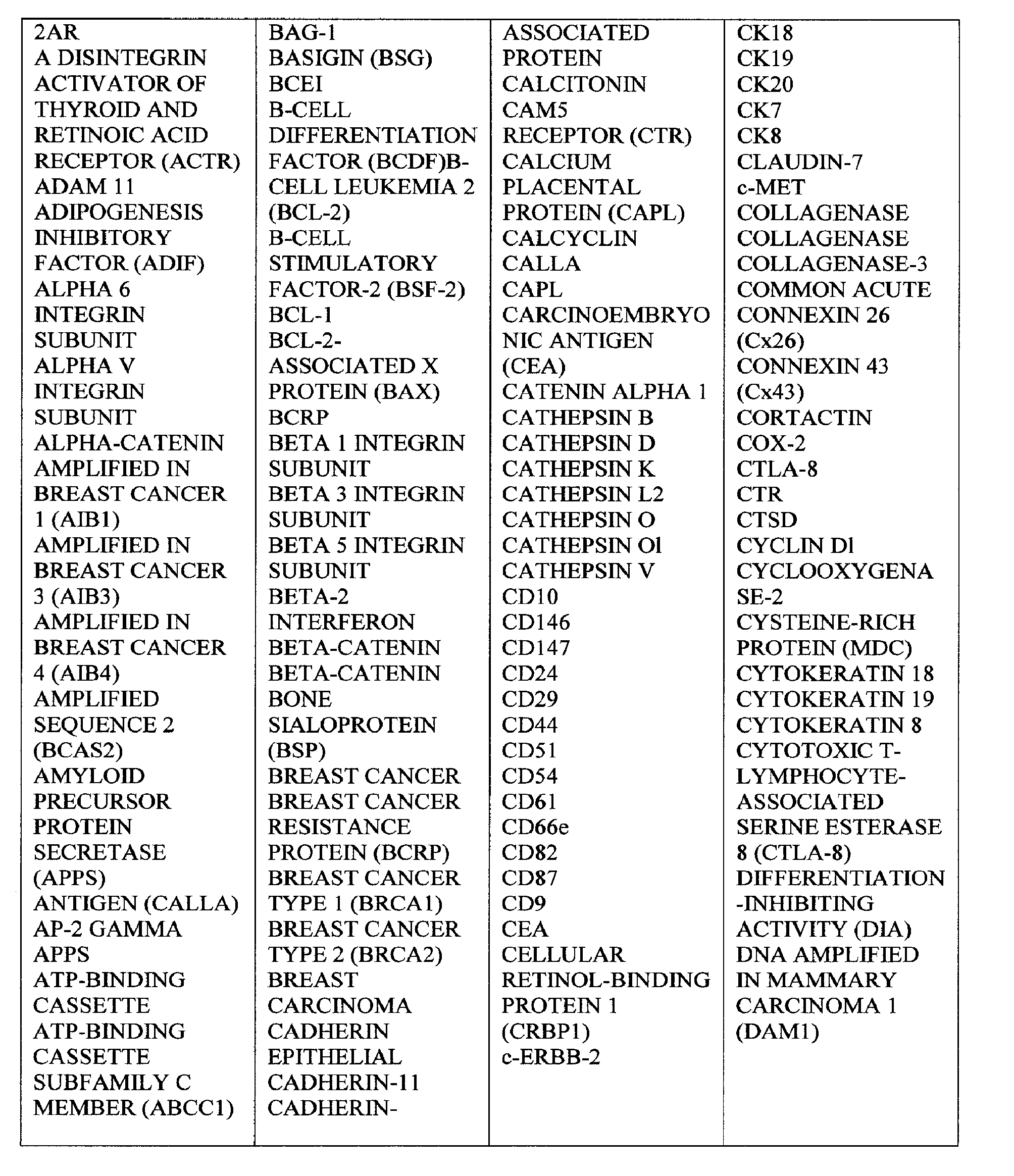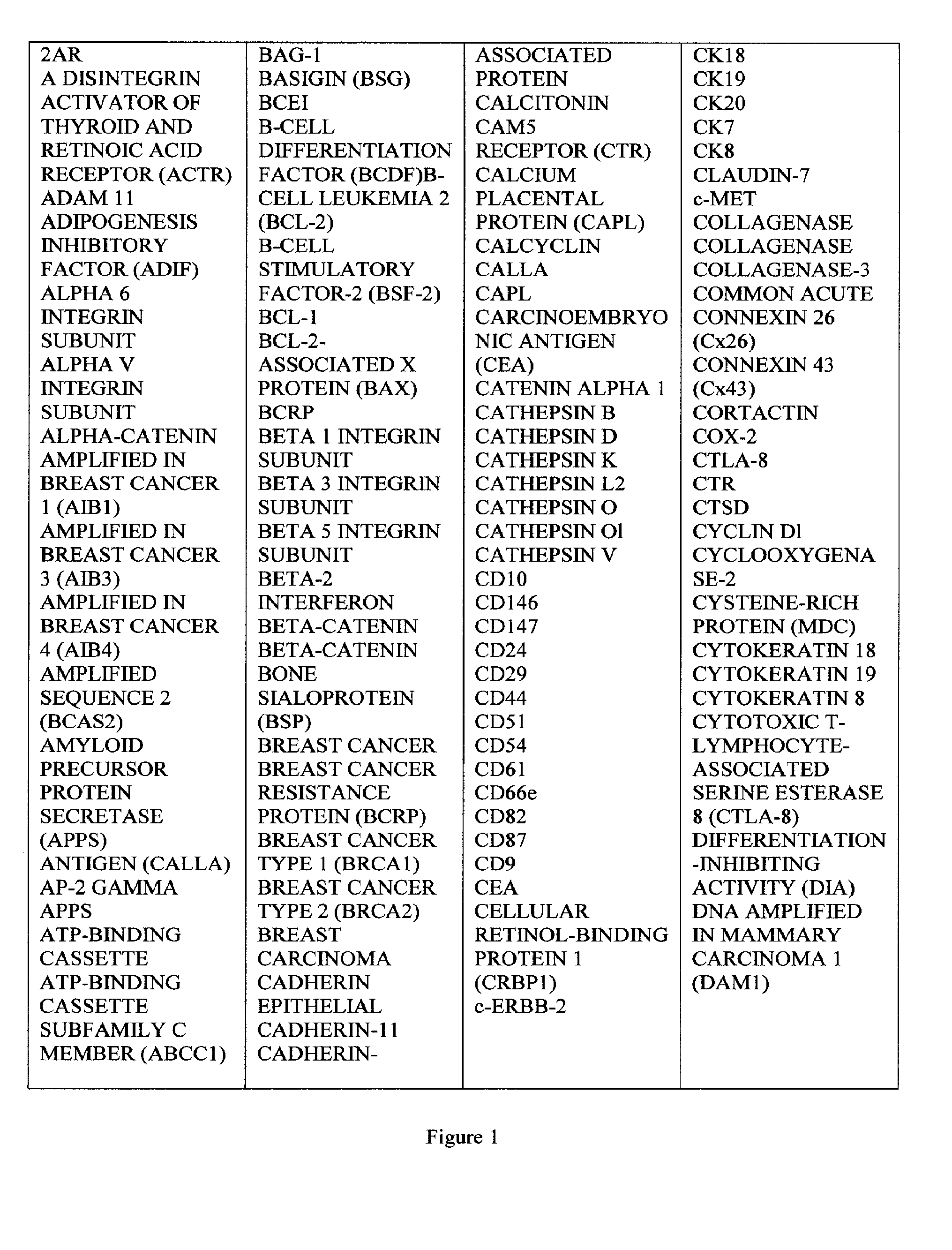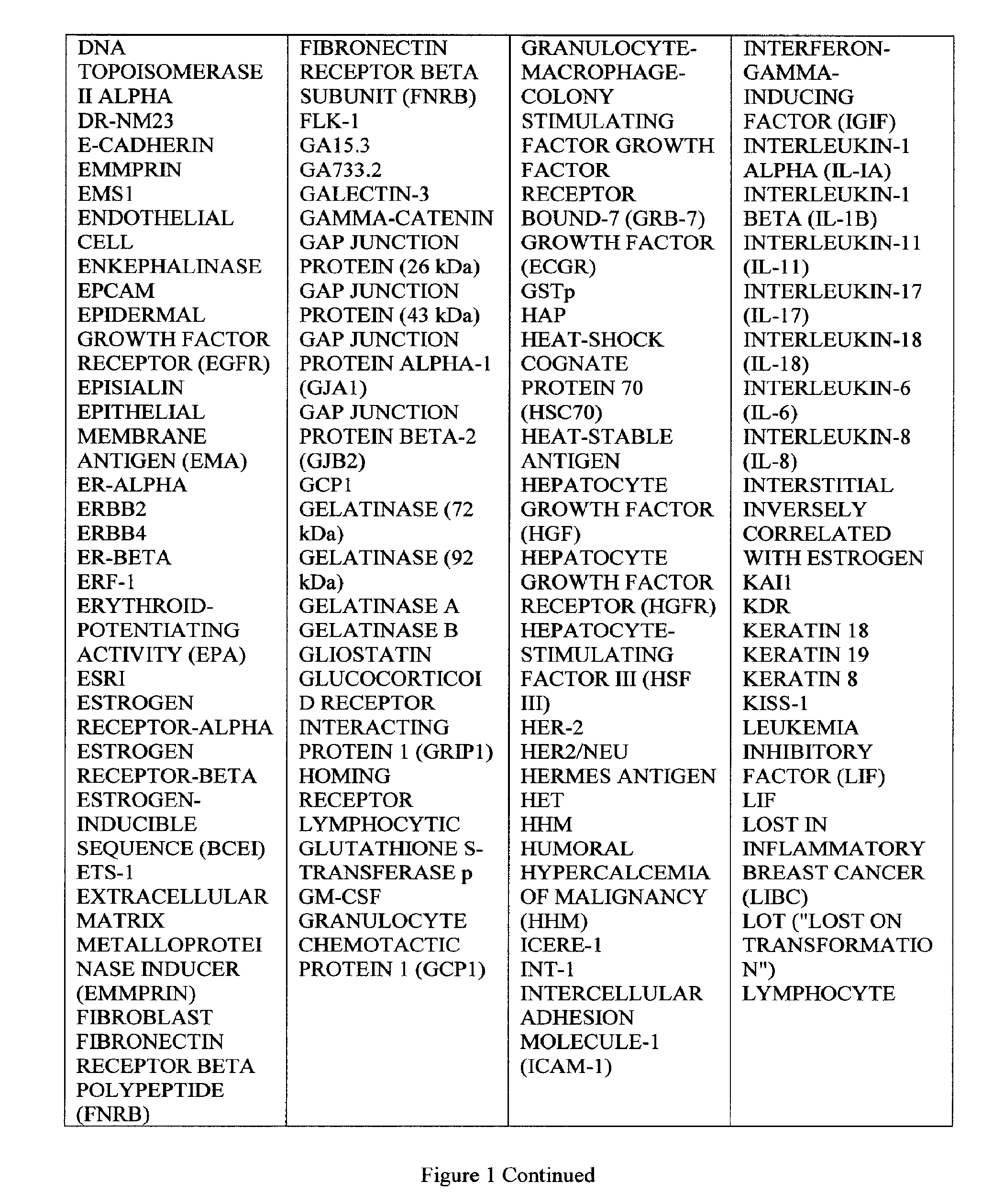Methods for diagnosing, prognosing, or theranosing a condition using rare cells
a technology of rare cells and diagnostics, applied in the field of medical diagnostics and methods for diagnosing, prognosing or theranosing a condition in a patient, can solve the problems of patient not responding to the therapeutic treatment, many cancers are not diagnosed, prognosised or treated properly,
- Summary
- Abstract
- Description
- Claims
- Application Information
AI Technical Summary
Benefits of technology
Problems solved by technology
Method used
Image
Examples
example 1
A Patient is Evaluated for the Presence or Absence of Prostate Cancer by Analyzing for a Serum Marker in a First Sample Taken from the Patient and by Enumerating the Number of Rare Cells in a Second Sample Taken from the Patient
[0123]A blood sample is obtained from the patient and split into a first sample and a second sample.
[0124]The first sample is analyzed for prostate specific antigen using a diagnostic kit for detecting levels of prostate specific antigen in a blood sample. A known quantity of blood is mixed with a reagent from the diagnostic kit that binds to prostate specific antigen forming a reaction mixture. The reaction mixture is applied to a test strip. The test strip is washed and a level of prostate specific antigen in the blood sample is reported by an indicator. The level of prostate specific antigen in the blood sample is recorded.
[0125]The second sample is applied to a microfluidic device comprising an array of obstacles and anti-EpCAM binding moieties. The array...
example 2
A Patient is Evaluated for the Presence or Absence of Breast Cancer by Analyzing for a Nucleic Acid in a First Sample Taken from the Patient and by Enumerating the Number of Rare Cells in a Second Sample Taken from the Patient
[0128]A biopsy sample and a blood sample are obtained from the patient. The biopsy sample is analyzed for a gene encoding ERBB2 using a RT-PCR for detecting levels of the ERBB2 gene expression in the biopsy sample. The level of ERBB2 gene in the biopsy sample is recorded.
[0129]The blood sample is applied to a microfluidic device comprising an array of obstacles and covered with anti-EpCAM binding moieties. The array of obstacles includes multiple subarrays that are fluidly coupled to one another. The subarrays are staggered such that they form a restricted gap between adjacent subarrays. Each subarray can have the same or a different average gap between its obstacles.
[0130]As sample flows through the microfluidic device, one or more rare cells are retained by t...
example 3
A Patient is Evaluated for the Presence or Absence of Cancer by Enumerating the Number of Circulating Tumor Stem Cells in a Sample Taken from the Patient
[0132]A blood sample is obtained from the patient and applied to a microfluidic device comprising an array of obstacles and anti-EpCAM binding moieties. The array of obstacles has a uniform pattern such that each successive row is offset from the previous row by ½ the period with the exception of a subset of obstacles that are unaligned from the above pattern such that they form a restricted gap (smaller than the average gap size).
[0133]As sample flows through the microfluidic device, one or more CTCs are retained by the microfluidic device due to size and / or affinity interactions. The CTCs are detected using a label comprising an antibody to cytokeratin and a first detectable label. The first detectable label is phycoerythrin. A subset of the CTCs, the circulating tumor stem cells, are detected using an antibody to CD44 and a secon...
PUM
| Property | Measurement | Unit |
|---|---|---|
| fluorescence emission wavelength | aaaaa | aaaaa |
| fluorescence emission wavelength | aaaaa | aaaaa |
| fluorescence emission wavelength | aaaaa | aaaaa |
Abstract
Description
Claims
Application Information
 Login to View More
Login to View More - Generate Ideas
- Intellectual Property
- Life Sciences
- Materials
- Tech Scout
- Unparalleled Data Quality
- Higher Quality Content
- 60% Fewer Hallucinations
Browse by: Latest US Patents, China's latest patents, Technical Efficacy Thesaurus, Application Domain, Technology Topic, Popular Technical Reports.
© 2025 PatSnap. All rights reserved.Legal|Privacy policy|Modern Slavery Act Transparency Statement|Sitemap|About US| Contact US: help@patsnap.com



